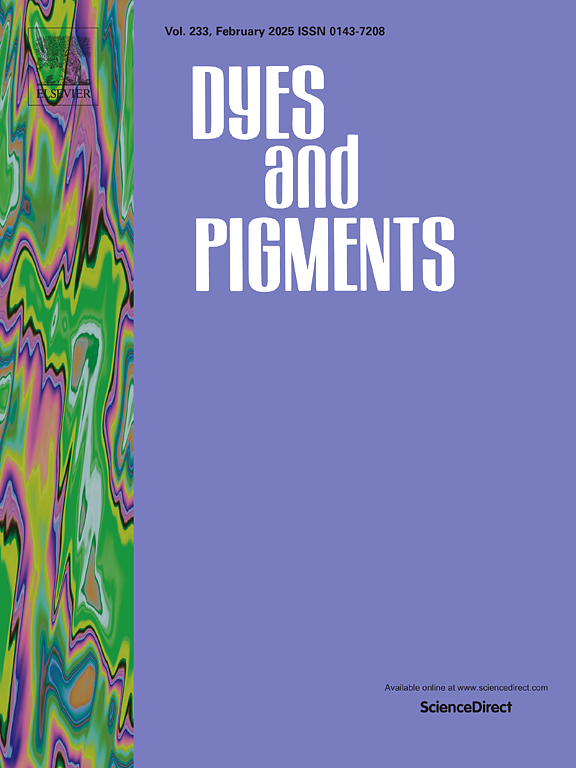Sizing-up the aromatic system of a cyclometalated N-heterocyclic carbene in a luminescent platinum-based sensor to xanthine
IF 4.1
3区 工程技术
Q2 CHEMISTRY, APPLIED
引用次数: 0
Abstract
A cyclometalated N-heterocyclic carbene platinum(II) complex comprising a phenanthrenyl moiety has been prepared and used to synthesize neutral and cationic luminescent complexes containing different ancillary ligands: [Pt(Phen^C∗)(acac)] (5), [Pt(Phen^C∗)(CNXyl)2]PF6 (6) and [Pt(Phen^C∗)(P^P)]PF6 (P^P: 1,1-bis(diphenylphosphino)methane, dppm 7; 1,2-bis(diphenylphosphino)ethane, dppe, 8, 1,2-bis(diphenylphosphino)benzene, dppbz, 9). Structural characterization by NMR and single-crystal X-ray studies endorsed the proposed molecular structure for these complexes with the formation of a six-membered platinacycle. Photophysical and computational studies for 5–9 disclosed the ligand-centered nature of the triplet state, mainly governed by the extended aromatic system of the Phen^C∗ ligand. Immobilized in ethyl cellulose (EC) films, compound 5 shows elevated quantum yield and long decay times in argon atmosphere and high sensitivity to molecular oxygen. Blends of 5 and EC (C5) were tested as a luminescent oxygen probe for the determination of xanthine (Xn), showing good photo stability and reversibility. The RSD is 0.9 % (n = 3) for 3·10−4 M and the detection limit achieves values of ∼2·10−5 M. This platinum-based sensor delivers better results than the ones obtained with [Ru(bpy)3]Cl2·6H2O, a typical luminophore used in commercial oxygen sensors. To improve the feasibility of the Xn determination, the sensor was implemented in a smartphone adapted device to be used as a in-situ Xn control.

求助全文
约1分钟内获得全文
求助全文
来源期刊

Dyes and Pigments
工程技术-材料科学:纺织
CiteScore
8.20
自引率
13.30%
发文量
933
审稿时长
33 days
期刊介绍:
Dyes and Pigments covers the scientific and technical aspects of the chemistry and physics of dyes, pigments and their intermediates. Emphasis is placed on the properties of the colouring matters themselves rather than on their applications or the system in which they may be applied.
Thus the journal accepts research and review papers on the synthesis of dyes, pigments and intermediates, their physical or chemical properties, e.g. spectroscopic, surface, solution or solid state characteristics, the physical aspects of their preparation, e.g. precipitation, nucleation and growth, crystal formation, liquid crystalline characteristics, their photochemical, ecological or biological properties and the relationship between colour and chemical constitution. However, papers are considered which deal with the more fundamental aspects of colourant application and of the interactions of colourants with substrates or media.
The journal will interest a wide variety of workers in a range of disciplines whose work involves dyes, pigments and their intermediates, and provides a platform for investigators with common interests but diverse fields of activity such as cosmetics, reprographics, dye and pigment synthesis, medical research, polymers, etc.
 求助内容:
求助内容: 应助结果提醒方式:
应助结果提醒方式:


